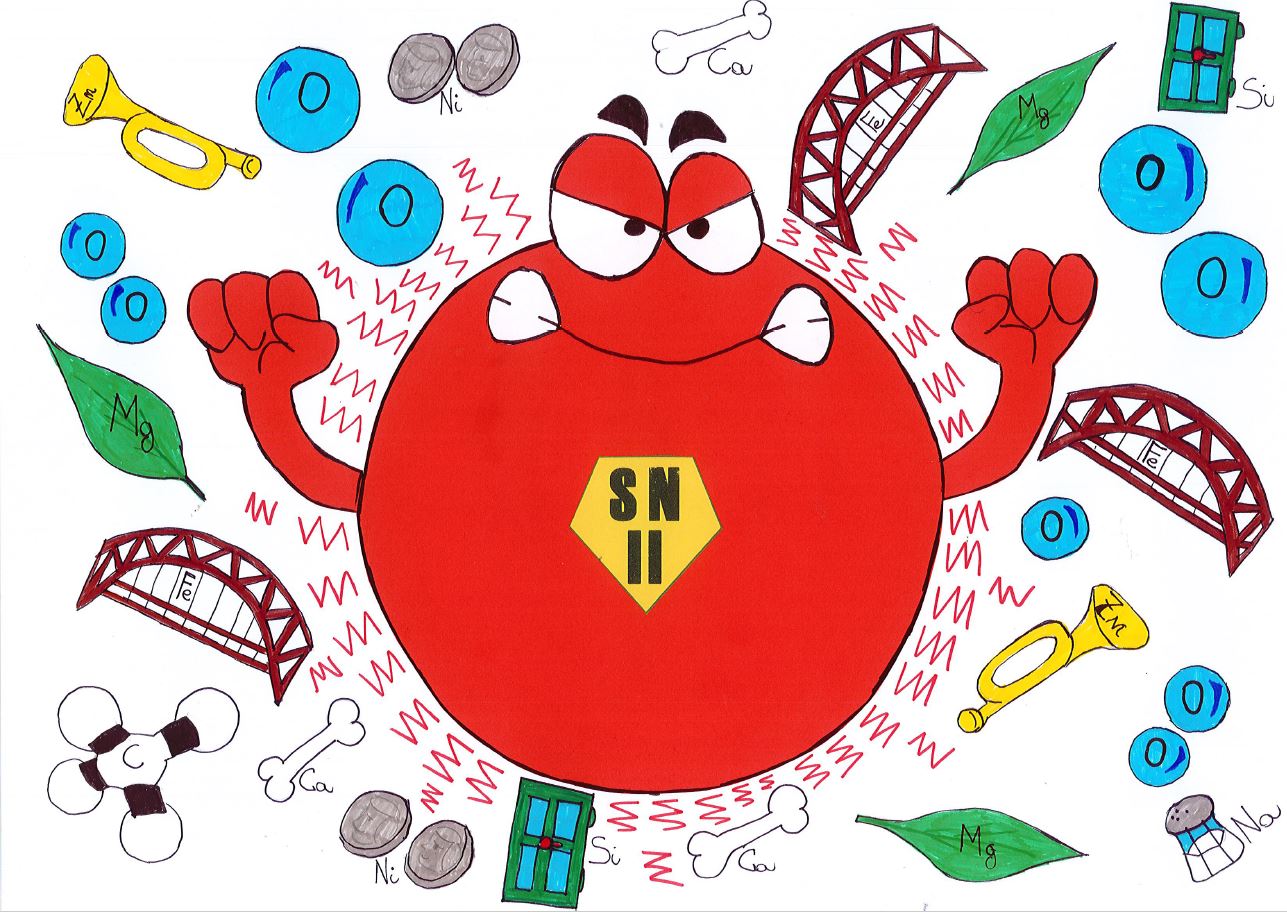
One of the most important elements produced by SN II is oxygen (we already mention it before). Moreover, there is a consistent production of
magnesium, silicon, calcium and, obviously, iron (through the expulsion of 56Ni).
If we check the percentages of the chemical elements in the human body, we may conclude that SN II products are enough for the development of life (at least for our limited knowledge of it).
However, there are still a couple of problems.
First, the iron in our Galaxy requires another production channel, being the contribution from SN II not enough to reproduce the observed trend. Such a contribution comes from “type Ia
Supernovae” (SN Ia, ideally represented in Figure 8).
Unlike SNe II, which explode when their cores collapse under the gravity force, SNe Ia require the presence of two stars belonging to a binary system (note that the majority of stars in the night sky
are not single stars, but are binaries rotating around the center of mass of their system).
In those systems, both stars already evolved to the White Dwarf stage and one accretes matter on the other. When the accreting star attains the physical conditions to trigger carbon (or helium) burning, a thermonuclear
runaway occurs (higher temperature implies higher energy and so on) and the star explodes. Those systems are the main iron producers in the Universe. Moreover, they synthesize other elements of the iron peak, as
nickel and copper (see Figure 8), as well as lighter elements, as silicon
and calcium.
The second problem to be discussed closely affect us, since it is related to technology. As a matter of fact, if cosmic nucleosynthesis would stop at iron,
we would miss a lot of chemical elements (most of them essential to modern technological systems). How could we break the deadlock? The only way is to request the intervention of a nuclear particle previously mentioned:
the NEUTRON.
